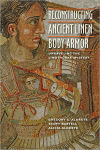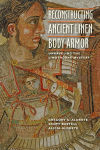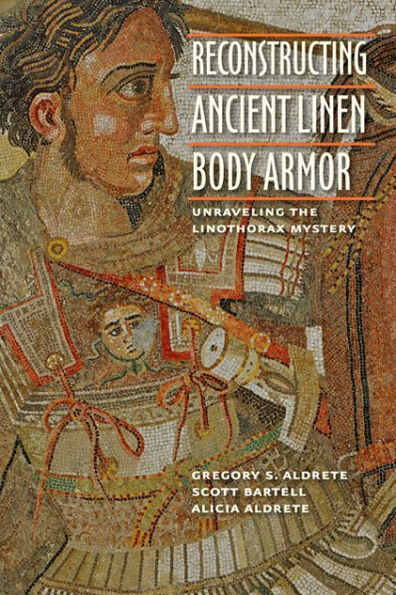Alexander the Great led one of the most successful armies in history and conquered nearly the entirety of the known world while wearing armor made of cloth. How is that possible? In Reconstructing Ancient Linen Body Armor, Gregory S. Aldrete, Scott Bartell, and Alicia Aldrete provide the answer.
An extensive multiyear project in experimental archaeology, this pioneering study presents a thorough investigation of the linothorax, linen armor worn by the Greeks, Macedonians, and other ancient Mediterranean warriors. Because the linothorax was made of cloth, no examples of it have survived. As a result, even though there are dozens of references to the linothorax in ancient literature and nearly a thousand images of it in ancient art, this linen armor remains relatively ignored and misunderstood by scholars.
Combining traditional textual and archaeological analysis with hands-on reconstruction and experimentation, the authors unravel the mysteries surrounding the linothorax. They have collected and examined all of the literary, visual, historical, and archaeological evidence for the armor and detail their efforts to replicate the armor using materials and techniques that are as close as possible to those employed in antiquity. By reconstructing actual examples using authentic materials, the authors were able to scientifically assess the true qualities of linen armor for the first time in 1,500 years. The tests reveal that the linothorax provided surprisingly effective protection for ancient warriors, that it had several advantages over bronze armor, and that it even shared qualities with modern-day Kevlar.
Previously featured in documentaries on the Discovery Channel and the Canadian History Channel, as well as in U.S. News and World Report, MSNBC Online, and other international venues, this groundbreaking work will be a landmark in the study of ancient warfare.
Alexander the Great led one of the most successful armies in history and conquered nearly the entirety of the known world while wearing armor made of cloth. How is that possible? In Reconstructing Ancient Linen Body Armor, Gregory S. Aldrete, Scott Bartell, and Alicia Aldrete provide the answer.
An extensive multiyear project in experimental archaeology, this pioneering study presents a thorough investigation of the linothorax, linen armor worn by the Greeks, Macedonians, and other ancient Mediterranean warriors. Because the linothorax was made of cloth, no examples of it have survived. As a result, even though there are dozens of references to the linothorax in ancient literature and nearly a thousand images of it in ancient art, this linen armor remains relatively ignored and misunderstood by scholars.
Combining traditional textual and archaeological analysis with hands-on reconstruction and experimentation, the authors unravel the mysteries surrounding the linothorax. They have collected and examined all of the literary, visual, historical, and archaeological evidence for the armor and detail their efforts to replicate the armor using materials and techniques that are as close as possible to those employed in antiquity. By reconstructing actual examples using authentic materials, the authors were able to scientifically assess the true qualities of linen armor for the first time in 1,500 years. The tests reveal that the linothorax provided surprisingly effective protection for ancient warriors, that it had several advantages over bronze armor, and that it even shared qualities with modern-day Kevlar.
Previously featured in documentaries on the Discovery Channel and the Canadian History Channel, as well as in U.S. News and World Report, MSNBC Online, and other international venues, this groundbreaking work will be a landmark in the study of ancient warfare.

Reconstructing Ancient Linen Body Armor: Unraveling the Linothorax Mystery
304
Reconstructing Ancient Linen Body Armor: Unraveling the Linothorax Mystery
304
Product Details
| ISBN-13: | 9781421408194 |
|---|---|
| Publisher: | Johns Hopkins University Press |
| Publication date: | 05/01/2013 |
| Pages: | 304 |
| Product dimensions: | 6.00(w) x 9.00(h) x 1.10(d) |
| Age Range: | 18 Years |



